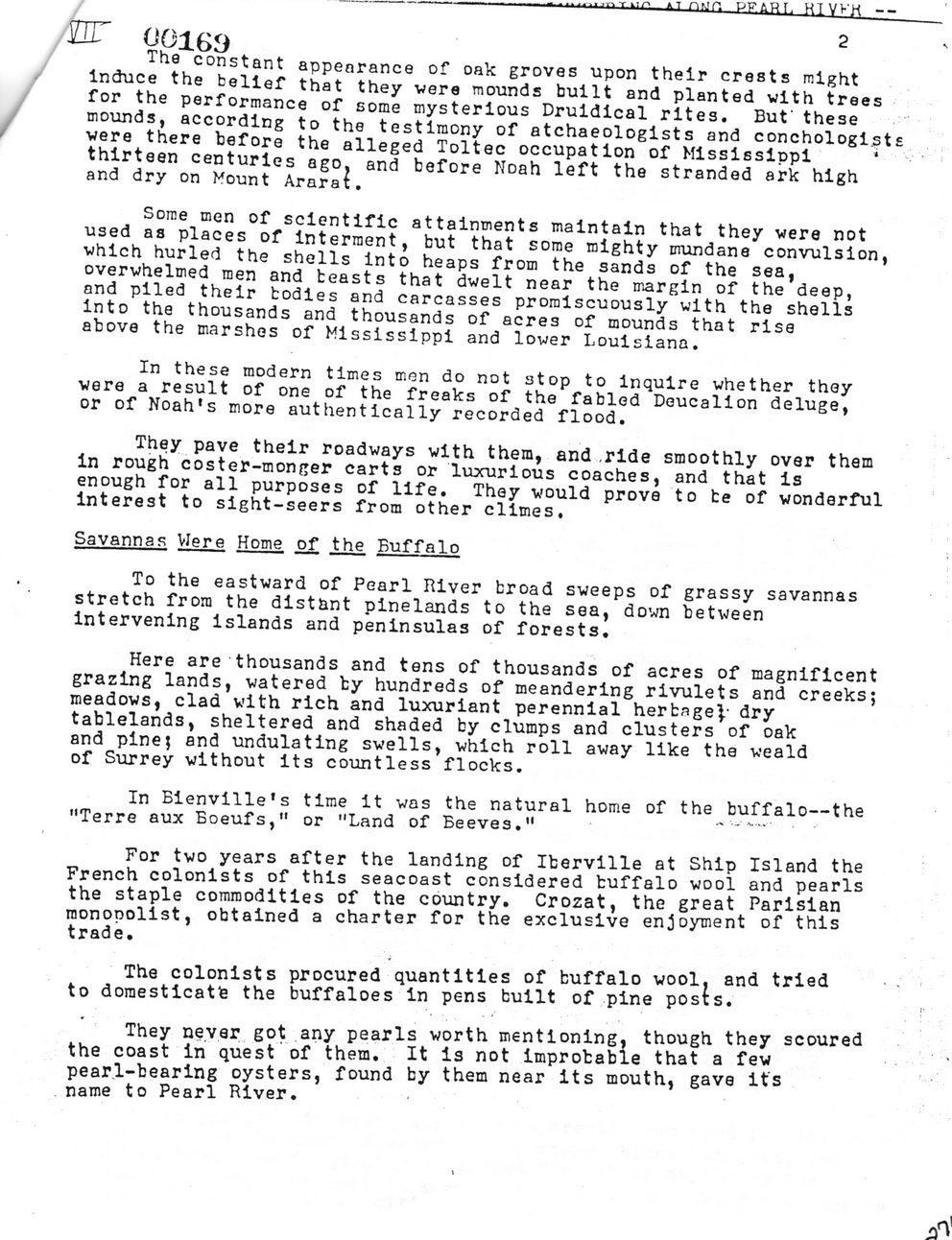This text was obtained via automated optical character recognition.
It has not been edited and may therefore contain several errors.
^0T.nr>.. at nun PF&RT. HIVKH -- ET 00169 2 The constant appearance of oak groves upon their crests might induce the belief that they vere mounds built and planted with trees for the performance of some mysterious Druidical rites. But' these mounds, according to the testimony of atchaeologists and conchologists vere there before the alleged Toltec occupation of Mississippi * thirteen centuries ago. and before Noah left the stranded ark high and dry on Mount Ararat. Some men of scientific attainments maintain that they vere not used as places of interment, but that some mighty mundane convulsion, which hurled the shells into heaps from the sands of the sea. overwhelmed men and beasts that dwelt near the margin of the deep, and piled their bodies and carcasses promiscuously with the shells into the thousands and thousands of acres of mounds that rise above the marshes of Mississippi and lower Louisiana. In these modern times men do not stop to inquire whether they were a result of one of the freaks of the fabled Deucalion deluge, or of Noah's more authentically recorded flood. They pave their roadways with them, and .ride smoothly over them in rough coster-monger carts or luxurious coaches, and that is enough for all purposes of life. They would prove to be of wonderful interest to sight-seers from other climes. Savannas VIere Home of the Buffalo To the eastward of Pearl River broad sweeps of grassy savannas stretch from the dist&nt pinelands to the sea, down between intervening islands and peninsulas of forests. Here are thousands and tens of thousands of acres of magnificent grazing lands, watered by hundreds of meandering rivulets and creeks; meadows, clad with rich and luxuriant perennial herbage}- dry tablelands, sheltered and shaded by clumps and clusters of oak and pine; and undulating swells, which roll away like the weald of Surrey without its countless flocks. In Bienville's time it was the natural home of the buffalo—the "Terre aux Boeufs,11 or "Land of Beeves." For two years after the landing of Iberville at Ship Island the French colonists of this seacoast considered buffalo wool and pearls the staple commodities of the country. Crozat, the great Parisian monopolist, obtained a charter for the exclusive enjoyment of this trade. The colonists procured quantities of buffalo wool, and tried to domesticate the buffaloes in pens built of pine posts. They never got any pearls worth mentioning, though they scoured the coast in quest of them. It is not improbable that a few pearl-bearing oysters, found by them near its mouth, gave it's name to Pearl River.

Hancock County Early Lumbering-along-Pearl-River-1886-(074)